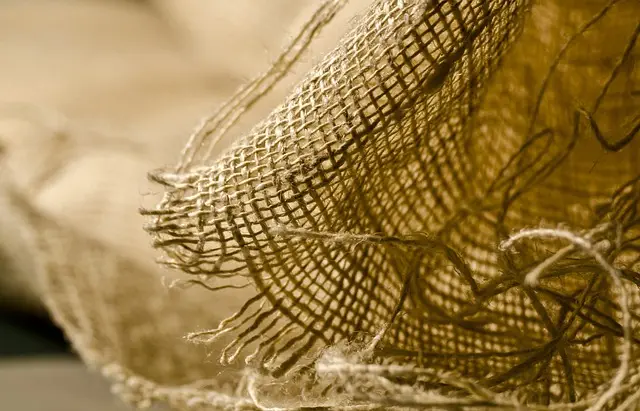Red Vein Sumatra and Maeng Da kratom strains have been studied for their anti-inflammatory properties, with each showing promise in managing inflammation through different means. Red Vein Sumatra is recognized for its analgesic and sedative effects, attributed to its higher concentration of the alkaloid 7-hydroxymitragynine, which may help regulate immune response and reduce pro-inflammatory cytokines. Maeng Da, with a balanced alkaloid profile including both mitragynine and 7-hydroxymitragynine, offers anti-inflammatory effects that could influence immune response pathways. Its unique drying process may enhance the bioavailability of its active compounds. Users have noted distinct effects from each strain; Red Vein Sumatra is preferred for addressing chronic pain and sleep disturbances due to its calming impact, while Maeng Da is favored for daytime use due to its energizing properties alongside pain relief. The alkaloid content in Maeng Da contributes to its potent anti-inflammatory benefits. When considering Red Vein Sumatra vs Maeng Da for inflammation management, it's important to factor in personal needs, tolerance, and daily routines, as individual responses can differ significantly. Users should consult with healthcare professionals and experiment with dosages and timing for optimal results in managing their conditions.
Exploring the therapeutic potential of natural supplements, this article sheds light on kratom’s role in inflammation reduction. With a focus on Red Vein Sumatra and Maeng Da Kratom, we delve into their alkaloid profiles and anti-inflammatory properties. “Red Vein Sumatra vs Maeng Da” comparisons highlight user experiences, offering practical insights into effective inflammation management strategies. Join us as we uncover the nuances of these potent plant compounds and their implications for health and well-being.
- Unraveling the Effects of Red Vein Sumatra and Maeng Da Kratom on Inflammation Reduction
- Comparative Analysis: Alkoid Profiles and Anti-Inflammatory Potential in Red Vein Sumatra and Maeng Da Kratom
- User Experiences and Practical Insights on Red Vein Sumatra vs Maeng Da for Inflammation Management
Unraveling the Effects of Red Vein Sumatra and Maeng Da Kratom on Inflammation Reduction

Studies have begun to uncover the potential anti-inflammatory properties of kratom supplements, with specific strains like Red Vein Sumatra and Maeng Da garnering attention for their effects on inflammation reduction. Red Vein Sumatra kratom is celebrated for its analgesic and sedative effects, often attributed to its alkaloid profile which includes 7-hydroxymitragynine, a potent compound that may contribute to its anti-inflammatory action. This strain’s ability to modulate the immune response and reduce pro-inflammatory cytokines has been observed in various preclinical models, suggesting a therapeutic potential for conditions characterized by excessive inflammation.
In contrast, Maeng Da kratom, revered for its balanced alkaloid content and stimulant properties, also exhibits anti-inflammatory effects. The unique drying process of Maeng Da leaves may enhance the bioavailability of its active components, which could explain its efficacy in mitigating inflammation. Research indicates that Maeng Da kratom may influence pathways involved in the body’s immune response and could offer a complementary approach to managing conditions with inflammatory components. The comparison between Red Vein Sumatra and Maeng Da kratom, often highlighted as Red Vein Sumatra vs Maeng Da, underscores the importance of understanding the distinct effects each strain may have on inflammation reduction, which could inform more personalized approaches to treatment.
Comparative Analysis: Alkoid Profiles and Anti-Inflammatory Potential in Red Vein Sumatra and Maeng Da Kratom

Research studies have delineated the alkaloid profiles of Red Vein Sumatra and Maeng Da kratom, two prominent strains, and their correlation with anti-inflammatory efficacy. Both strains contain a rich spectrum of alkaloids, with the primary ones being mitragynine and 7-hydroxymitragynine, which are credited for their potential medicinal properties. A comparative analysis of these strains reveals nuanced differences in their alkaloid content, which may influence their anti-inflammatory potential. Red Vein Sumatra is characterized by a higher concentration of 7-hydroxymitragynine compared to mitragynine, whereas Maeng Da, known for its ‘pure’ or ‘enhanced’ leaves, has a balanced profile with both alkaloids present in significant amounts. This compositional distinction may contribute to variations in their anti-inflammatory effects as observed in various experimental models. Clinical and preclinical investigations have shown that Red Vein Sumatra may exhibit a more pronounced anti-inflammatory response due to its elevated 7-hydroxymitragynine content, while Maeng Da’s balanced alkaloid profile might offer a broader spectrum of effects. Users considering Red Vein Sumatra or Maeng Da kratom for inflammation reduction should be aware of these differences and consult with healthcare professionals to determine the most suitable option based on their specific health needs and conditions.
User Experiences and Practical Insights on Red Vein Sumatra vs Maeng Da for Inflammation Management

Users who have experienced both Red Vein Sumatra and Maeng Da kratom for inflammation management often report distinct differences in their effects. Red Vein Sumatra is frequently praised for its sedative qualities, which can be particularly beneficial for those dealing with chronic pain or inflammation that disrupts sleep. Its relaxation-inducing properties may help alleviate discomfort without the same level of stimulation as other strains, making it a preferred choice for evening use. On the other hand, Maeng Da is known for its balanced blend of stimulating and analgesic effects. Many users find that it provides a clear-headed energy boost alongside effective pain relief, which can be advantageous during the day when maintaining productivity levels is essential. The alkaloid profile in Maeng Da, which includes mitragynine and 7-hydroxymitragynine, among others, is credited with its potent anti-inflammatory properties.
In practical use, individuals managing inflammation have found that the choice between Red Vein Sumatra and Maeng Da often comes down to their specific needs and daily routines. Those prioritizing relaxation and sleep quality might opt for the soothing effects of Red Vein Sumatra. Conversely, users seeking a blend of energy and pain relief that allows them to remain active may prefer the invigorating properties of Maeng Da. It’s important for individuals to consider their body’s response to each strain, as personal tolerance and the severity of inflammation will influence which kratom might be more effective. User experiences emphasize the importance of experimenting with dosage and timing of intake to achieve optimal results in managing inflammatory conditions.
Red Vein Sumatra and Maeng Da kratom have emerged as subjects of interest in the natural health community, particularly for their potential anti-inflammatory properties. This article has delved into the effects of these strains on inflammation reduction, highlighting the alkoid profiles that contribute to their anti-inflammatory potential through scientific analysis. Moreover, real-world user experiences offer valuable insights into managing inflammation with these kratom supplements, providing a comprehensive view of their effectiveness. While further research is warranted to fully understand their impact, the findings suggest that both Red Vein Sumatra and Maeng Da may play a role in complementary health strategies for individuals seeking to mitigate inflammation. Users considering these options should do so with care and consult healthcare professionals to ensure safe and effective use.






